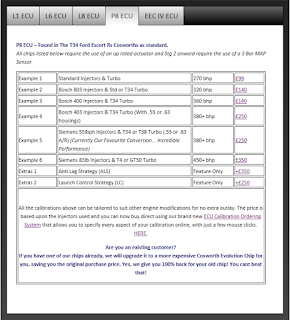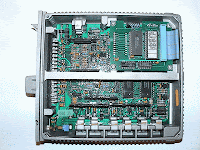At the moment I have the standard intercooler , blow off valve, and air box.
I have briefly looked into intercoolers for the people in Australia and New Zealand there is a universal RS500 type one regularly listed on trademe (also a radiator) they are a very reasonable price, but this is a generic one and they did not sound like they were exactly made for the model car. For instance I enquired about the radiator and they dont have a location for the fan switch. The sellers name is "redlinevip", it is a cheap option if you dont mind altering brackets and getting a boss for the temperature sender / blow off valve etc fabricated....
http://www.trademe.co.nz/stores/redline-performance-2012

The other option for New Zealand and Australian's is to use Lodge Auto in Hastings Nz, http://www.lodgeautocentre.co.nz/cosworth.html.
After inquiring on the RS owners club forum (www.rsownersclub.co.uk) they recommended a 'Pro Alloy RS500 Spec R' with a (Garrett core) after I mentioned I was thinking of going with 'Airtek'. They had a write up in Classic Ford magazine testing the intercoolers and Airtek was the best value for money.
You can see from the pics below down one of the inlet pipes the Spec R one and the core and how many fins there are
Verus the Airtek one....
For me it is down to budget and I have since purchased a 60mm Airtek intercooler. I have yet to fit it.
With the hoses you generally buy a set of three:
-Air filter to Turbo
-Intercooler to inlet manifold
-Turbo to intercooler
Below is a pic of mine standard
I puchased mine from Matt Lewis Motorsport via Ebay,(SFS Silicone Boost Hose Kit - RS Cosworth 2wd T3 Turbo ) he has an extensive range of products listed online, and is also great communication wise and slightly cheaper than the likes of Burton power.
http://www.mattlewismotorsport.co.uk/
The existing blow off valve is fitted tee-ed off the intercooler and re-circulates back to the air filter intake pipe.
When you upgrade the intercooler you are generally expected to upgrade the blow off valve and the hoses at the same time.With the new hoses for the inlet manifold to intercooler pipe there should now be a tee for a blow off valve close to the throttle body, this is so when you put the new intercooler in that you move the blow off valve closer to the inlet. The new turbo to air filter pipe will no longer have the recirculating pipe coming into it as well, and the blow off valve will now vent to atmosphere.
See pic below (its a mis match of colours) the large blue pipe (turbo to air filter) no longer has the blow off valve outlet pipe coming into it. The yellow pipe for the inlet manifold to intercooler pipe now has a tee with a blow off valve on it. The red pipe from the turbo outlet to intercooler stays the same but if you get a kit with all 3 pipes its worthwhile replacing it at the same time.
I tried to find out if theres any difference between the 4wd and the 2wd pipe lengths someone mentioned on one of the forums that the 2wd one was slightly longer. But from the sounds of it if you were going to get second hand pipes they probably would all fit both models.
I have complied all the bits for my car and will take a few pics when I eventually get around to doing some much needed work on it.
Here is a link from the RS forums website of someone else with an Airtek intercooler fitted...

http://www.rsownersclub.co.uk/rsocbb/showthread.php?t=532345&highlight=intercooler
Again over in New Zealand / Australia if you were on a budget you could probably get the hoses made from any performance car company such as racepro / kendalls /edgells who would probably send off to get Samco pipes made. And you could just use a generic intercooler like Evo or GTR but because its a cossie I think its worth spending the cash and have a tidy install.


















